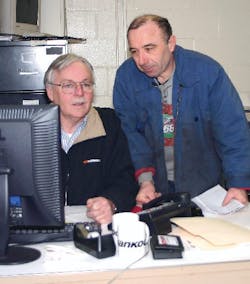I knew it was time for this message. The issue today comes out in nearly every conversation or training session I have with leaders. It comes out with manufacturers. It comes out with owners and managers of independent retail tire dealerships. It comes out with leaders of wholesale locations and/or commercial truck service centers. What’s the issue? Managers are getting bogged down being doers instead of being leaders. Their store’s growth is limited because they won’t let go and let their people be the best assets they can be.
I had a series of phone calls recently with a major tire manufacturer’s commercial sales leadership team. We agreed that one of their key problems with their sales management was that many of their managers (and sales reps) were spending their time on a whole host of activities that produced marginal results — majoring in minors instead of majoring in majors.
At a recent training session with a group of retail store managers, as we “went around the horn” and discussed what challenges they were having to grow store sales, one store manager clarified the problem perfectly. He said, “When I started in a store over 30 years ago, I could have my hands in just about everything and keep the store in growth mode. Today, there is so much more to do, and without a change in my habits to get my assistant managers and associates more involved in all aspects of the store’s business, I just can’t do the key things for more growth — like leaving the store and going out to make some sales calls in the community.”
Challenge: Is your team stuck in the habit of doing too many things themselves instead of empowering others? Are your stores or business units losing productivity every day — the high-priority work that brings in the real money is not getting done — because other urgent but less-productive work is stealing your team’s time? Did you open a store with potentially a young manager who is a fabulous worker, but lacks coaching skills to grow others? If you answered yes to these questions, you’re not alone.
Solution: Each of your leaders must sort out the priorities of the business that produce the most results, develop a systematic and consistent environment of coaching others to do those priorities first — not last, and have your leaders understand and get command of the emotions of letting go to grow.
SalesMind principles applied: There’s no better time than now to sit down in a series of planned meetings with your leaders/managers (meetings that build on each other) and grind out these ideas into real actions that they in turn can incorporate with their own employees:
• Priorities: Make an honest list of what really creates the most sales. Is it more training in sales techniques or phone skills so that more potential buyers are converted (close rates) to customers? Is it finding more ways for salespeople to do less “service” work and make more sales calls?
I had a dealer manager tell me he personally drove 40 miles each way to take two tires to a customer — 80 miles of driving and how much productivity lost? I had another large customer tell me that with more focus on sales priorities and better service teamwork, they believe they could double the actual sales call time of their commercial team. Double. His punch-line to me: “That’s like doubling my sales force.”
Here’s another tip: I have attendees at my SalesMind seminars make two lists. List one is the things they really like to do each day. As we discussed those activities in an open forum, we all agreed that many of them were simply not productive. List two was the things they didn’t like to do — and we all discovered those activities had the potential to really produce the results desired. Cultivate the habit where your employees will do the things they don’t like to do, and I’ll bet your stores sales will go up.
• Empowering: Leaders get trapped by being doers — they do a task instead of teach it to an employee — and then fall into a dual trap. Trap one is that they never have enough time to get all of the work of the day done. There are simply more tasks on their plate than time available. Trap two is that the associate cannot grow — because they don’t get the chance to learn how to understand the task and then take action to get it done. Leaders need time back and employees need to grow in capabilities.
• Emotions: Do your leaders want to let go? Do they feel threatened if they share responsibility? They may feel, “Aw, it’s just easier for me to do it instead of Ron, the assistant manager — it’s just too much of a hassle to go through the whole problem with him.” As a dealership team, you’ve got to sit down together and talk about these emotions. List them out. Why do they exist? What’s the win to conquer them? If your organization can get these feelings out on the table, it’s often the recipe for getting leaders to let go and let others try things in the store — and become real solution-providers and problem-solvers.
So as you go forward this year with your team, stay focused on this truth: We’ll grow if we can tap the potential of the greatest assets we have — the minds, efforts and talents of our people. ■
Doug Trenary, president of Doug Trenary’s Fast-Track Inc., is an award-winning author, speaker and teacher who has helped companies of multiple sizes, including independent tire dealerships, increase sales and productivity since 1985. His book, “The SalesMind,” focuses on how to establish strong positions with yourself, your buyers, and your time. For more information, email him at [email protected] or call (404) 262-3339.



